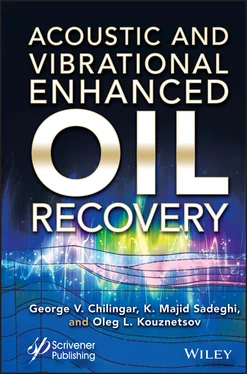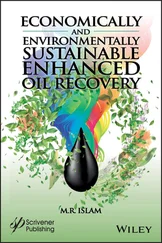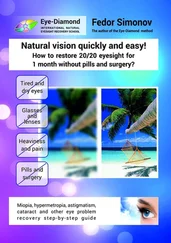The results of vibro-stimulation tests for enhanced oil recovery, using powerful surface-based vibro seismic sources, indicate that the rate of displacement of oil by water increases and percentage of non-recoverable residual oil decreases if the vibroenergy is applied to the porous medium containing oil (Kuznetsov et al ., 2021 [68]). Tests on sandpacks showed an increase of degassing rate due to application of vibro-energy. Results of both laboratory and field tests of the proposed enhanced oil recovery method showed an increase in the recovery of oil and oil-water ratio. Decrease in water cut is caused by the reduction in the oil-water interfacial tension and increase in the relative permeability to oil and to water.
This proposed vibro-seismic methodology will serve as an additional enhanced oil production recovery technique. Vibro-energy reduces interfacial tension, increases the relative permeability to oil, and increases the produced oil-water ratio. Possibly, this technique can be used in conjunction with other methods, such as thermal recovery, application of direct electric current, and chemical floods.
In the, 1980s, Donaldson, Chilingar, and Yen published two books on Enhanced Oil Recovery (I: Fundamental and Analyses and II: Processes and Operations) (Donaldson et al. , 1985 [57]; Donaldson et al. , 1989 [58]).
Inasmuch as both acoustic/vibrational and EEOR technologies are used by the authors in revitalizing abandoned oil fields, decision was made to invite the foremost experts on EEOR (Professor’s Donald Hill and Muhammad Haroun) to make contribution to this book.
References and Bibliography
1. Ambah, S.A., Chilingar, G.V., Beeson, C.M., Application of electrokinetic phenomena in civil and petroleum engineering. N Y Acad. Sci. , 118, 585– 602, 1965.
2. Aoyagi, K. and Asakawa, T., Primary migration theory of petroleum and its application to petroleum exploration. Org. Geochem. , 2, 33–43, 47–56, 1980.
3. Aoyagi, K., Kazama, T., Sekiguchi, K., Chilingarian, G.V., Experimental compaction of Na-Montmorillonite clay mixed with crude oil and seawater. Chem. Geol. , 49, 385–392, 1985.
4. Aoyagi, K., Kobayashi, N., Kazama, T., Sawa, T., Sasaki, S., Compaction of clays under high pressure and programming temperature. J. Jpn. Assoc. Pet. Technol. , 40, 111–116 (in Japanese), 1975.
5. Beresnev, I. and Johnson, P., Elastic-wave stimulation of oil production: A review of methods and results. Geophysics , 59, 1000, 1994.
6. Beresnev, I., Theory of vibratory mobilization of nonwetting fluids entrapped in pore constrictions. Geophysics , 71, 2006.
7. Buryakovsky, L., Chilingar, G.V., Rieke, H.H., Shin, S., Fundamentals of the Petrophysics of Oil and Gas Reservoirs , p. 374, Wiley- Scrivener, Salem, MA, 2012.
8. Burst, J.F., Diagenesis of Gulf Coast clayey sediments and its possible relation to petroleum imigration. Am. Assoc. Pet. Geol. Bull. , 53, 73–93, 1969.
9. Chilingar, G.V. and Adamson, L.G., Does some migration of oil occur in a gaseous form? Int. Geol. Congr. Sec. 1, Part 1 , 64–70, 1964.
10. Chilingar, G.V., El-Nassir, A., Stevens, R.G., Effect of direct electrical current on permeability of sandstone cores. J. Pet. Technol. , 22, 830–836, 1970.
11. Chilingar, G.V. and Knight, L., Relationship between pressure and moisture content of kaolinite, illite and montmorillonite clays. Am. Assoc. Pet. Geol. Bull. , 56, 796–802, 1960.
12. Dickey, P.A., Possible primary migration of oil from source rocks in oil phase. Am. Assoc. Pet. Geol. Bull. , 59, 345–377, 1975.
13. Donaldson, E.C. and Alam, W., Wettability , p. 336, Gulf Publishing Company, Huston, TX, 2013.
14. Fedin, L.M., Fedin, K.L., Fedin, A.K., Basics of Increasing Heavy Oil Recovery , p. 112, Dolyam, Simpheropol, 2013.
15. Gerber, M.I. and Dvali, M.F., Natural Compressed Gases as a Probable Factor in Migration of Oil from Source Rock , p. 83, GosTopTechIzdat, Leningrad, 1961.
16. Hedberg, H.D., Geological aspects of origin of petroleum. Am. Assoc. Pet. Geol. Bull. , 48, 1755–1803, 1964.
17. Kapelyushnikov, M.A., Migration and accumulation of dispersed petroleum in sedimentary rocks. Dokl. Akad. Nauk USSR , 99, 078, 1954.
18. Kouznetsov, O.L., Simkin, E.M., Chilingar, G.V., Katz, S., Improved oil recovery by application of vibro-energy to waterflooded sandstones. J. Petrol. Sci. Eng. , 19, 191–200, 1998.
19. Kouznetsov, O.L., Simkin, E.M., Chilingar, G., Physical Bases of Acoustic and Vibrational Effects on Oil and Gas Deposits , p. 260, Izd. Mir, Moskow, 2001.
20. Kouznetsov, O.L., Simkin, E.M., Chilingar, G.V., Gorfunkel, M., Robertson, J., Seismic techniques of enhanced oil recovery: Experimental and field results. Energy Sources , 22, 877–890, 2002.
21. Kouznetsov, O.L. and Simkin, E.M., Transformation and Interaction of Geophysical Fields in the Lithosphere , p. 271, Oxford and IBH Publ, 1994.
22. Langnes, G.L., Robertson, J.O., Chilingar, G.V., Secondary Recovery and Carbonate Reservoirs , p. 304, Elsevier, New York, NY, 1972.
23. McAuliffe, C., Solubility in water of paraffin, cycloparaffin, olefin, acetylene, cycloolefin, and aromatic hydrocarbons. J. Phys. Chem. , 70, 1267–1275, 1966.
24. Perry Jr., E.A. and Hower, J., Late stage dehydration in deeply-buried pelitic sediments. Am. Assoc. Pet. Geol. Bull. , 56, 2013–2021, 1972.
25. Powers, M.C., Fluid-release mechanisms in compacting marine mudrocks and their importance in oil exploration. Am. Assoc. Pet. Geol. Bull. , 51, 1240– 1254, 1967.
26. Pride, S., Flekkøy, E., Aursjø, O., Seismic stimulation for enhanced oil recovery. Geophysics , 73, 23–35, 2008.
27. Rieke III, H.H. and Chilingarian, G.V., Compaction of Argillaceous Sediments , p. 424, Elsevier, Amsterdam, 1974.
28. Sadeghi, K.M., Sadeghi, M.-A., Jang, L.K., Chilingarian, G.V., Yen, T.F., A New Bitumen Recovery Technology and Its Potential Application to Remediation of Oil Spills. J. Pet. Sci. Eng. , 8, 2, 105–117, 1992.
29. Serruya, C., Picard, L., Chilingarian, G.V., Possible role of electric currents and potentials during diagenesis (Electrodiagenesis). Sediment. Petrol. , 37, 695–698, 1967.
30. Simkin, E.M., Hydrodynamic description of oil displacement by water process within the elastic vibration field, in: Proc. Int. Conf. Flow through Porous Media: Fundamentals and Reservoir Engineering Applications , pp. 171–175, 1992.
31. Simkin, E.M. and Surguchev, M.L., Advanced vibroseismic technique for waterflooded reservoir stimulation, mechanism and test results. Sixth European Symp. on Improved Oil Recovery , 1991.
32. Sinnokrot, A.A. and Chilingar, G.V., Effect of polarity of oil and presence on carbonate particleson relative permeability of rocks, in: The Compass of Sigma Gamma Epsilon , vol. 38, pp. 115–120, 1961.
33. Surguchev, M.L., Kouznetsov, O.L., Simkin, E.M., Hydrodynamic, Acoustic, and Thermal Cyclical Processing of Oil Layers , p. 320, Nedra Publ., Moscow, 1975.
34. Surguchev, M.L., Zheltov, U.V., Simkin, E.M., Physicochemical Micro processes in Oil-Gas-Bearing Formations , p. 215, Nedra Publ., Moscow, 1984.
35. C.H. Titus, J.K. Wittle, C.W. Bell, Apparatus for passing electric currents through an underground formation. US Patent 4495990 29 Jan, 1985.
36. Vahitov, G.G. and Simkin, E.M., Utilization of Physical Fields for Enhancement of Oil Recovery , p. 231, Nedra Publ., Moscow, 1985.
37. Welte, D.H., Petroleum exploration and organic geochemistry. J. Geochem. Explor. , 1, 117–136, 1972.
Читать дальше












